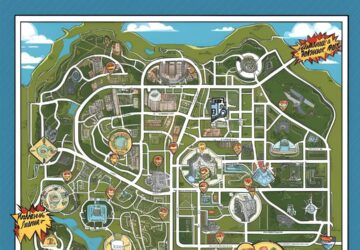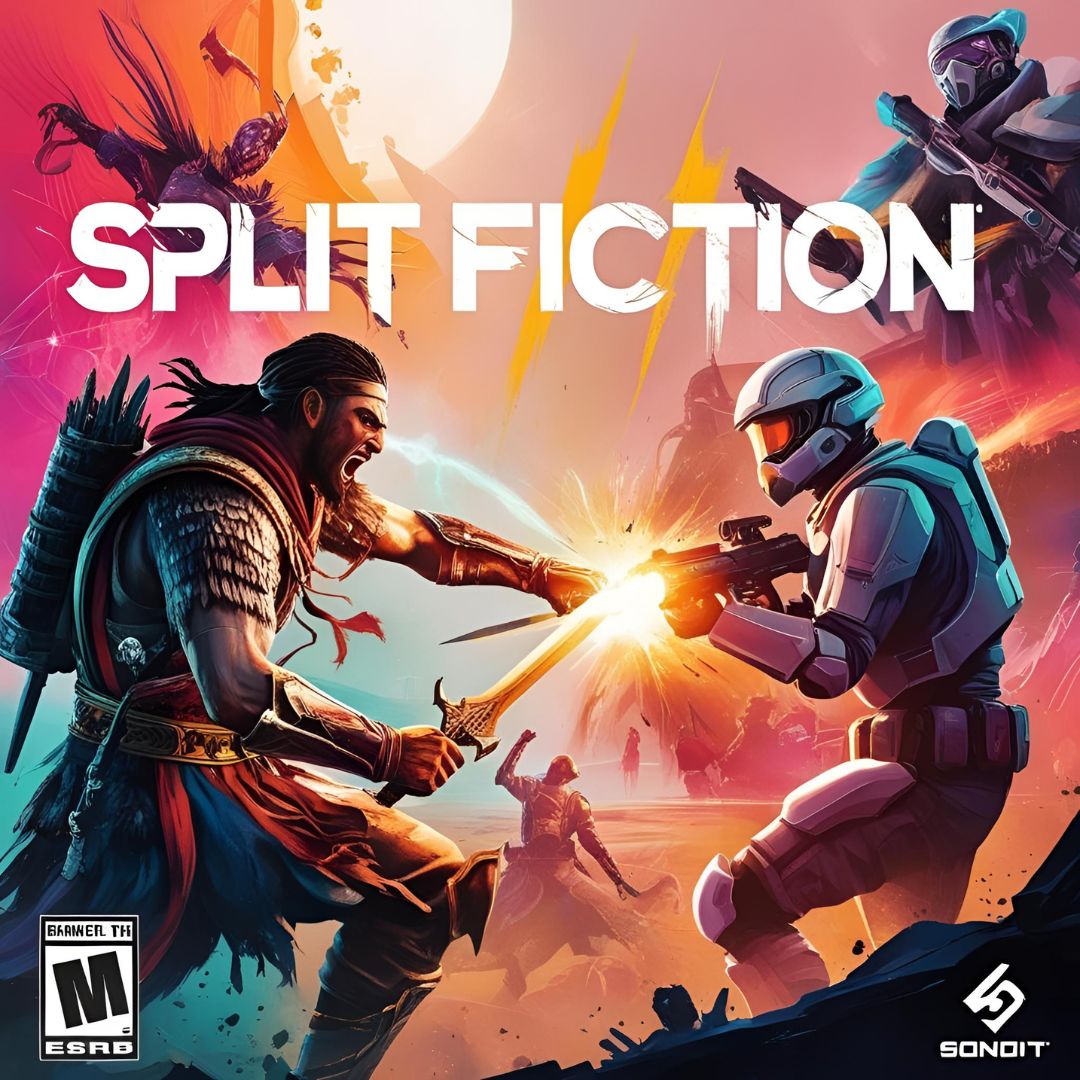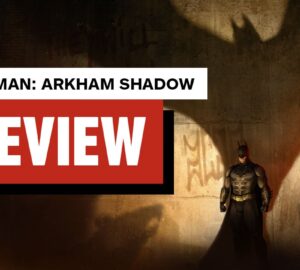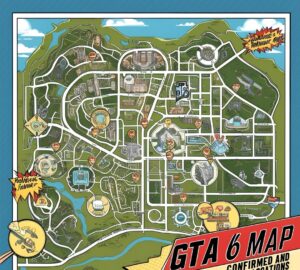Unfortunately for me, Split Fiction is the kind of game that makes you feel absolutely obligated to recommend it to your friends. It’s the kind of game where you’ll put down your controller to wipe away tears of laughter and pure emotion, as well as to summon literally everyone nearby to witness whatever dark, hilarious, mind-blowing, or referential event just occurred. As a result, I have been eagerly awaiting the lifting of this restriction for the most of the last week so that I can discuss it with someone other than the close friend I persuaded to accompany me. To put it briefly, one of the most amazing, clever, and memorable games I’ve ever played is Split Fiction. Finally, I am permitted to share it with everyone.
Game Overview
With Split Fiction, Hazelight Studios demonstrates its commitment to creation as an idea and an act, as well as its ability to be one of the most creative and inventive working studios. It also demonstrates its eagerness to expand. It was almost astonishing to see how much Hazelight had learnt from—and improved upon—2021’s critical darling It Takes Two, even if the film hasn’t released anything less than fantastic yet. Our two main characters, Mio and Zoe, are rich in nuance, charm, and individuality; the levels and settings are expansive, stunning, and diverse.
Almost all of the game’s seemingly endless gimmicks and gameplay mechanics, which are introduced much more quickly than in It Takes Two, are so entertaining, clever, and well-designed that they could stand alone. The writing, plot beats, and overall structure of the game create a remarkable story that transitions between heartbreaking, thought-provoking, darkly humorous, and joyful moments as smoothly as our heroines do when they grapple-hook between buildings. Split Fiction is a fantastic game that raises the bar not just for Hazelight but also for co-op games in general, despite the cheesiness that permeates the game’s main plot and its main antagonist, Rader.
Game Story
Split Fiction begins with a modest (if a little corny) introduction of its characters, Mio Hudson and Zoe Foster, despite its unavoidable grandeur. Zoe and Mio are completely different. The fantasy-loving Zoe is the epitome of sunshine, whereas Mio is an angsty, city-dwelling, sci-fi aficionado who would sooner pull out her own tooth than confide in a stranger. One thing unites the two, though: they are both unpublished authors in desperate need of funding and a byline.
As a result, they both seize the chance offered by Rader Publishing, a young business that combines technology and narrative to produce virtual worlds that customers may explore and lose themselves in. Mio swiftly decides against it, but Zoe, who is extremely trusting, is more than happy to connect herself into the company’s simulation machine and share her ideas. The humorously sly Silicone Valley-esque executive behind Rader Publishing, Rader, unintentionally pushes her into the same simulation pod as Zoe, ending the physical struggle that quickly breaks out from her protests. Designed exclusively for one user at a time, this results in a meltdown at Rader Publishing Headquarters as well as a blending of the genre stylings of the two ladies as their consciousnesses come into contact.
Game Characters
Zoe is initially annoyed by Mio’s presence in the imaginary world she has created for Rader, but she is put off by her pessimism and contemptuous demeanor. However, the unusual pair soon forms a bond after Mio persuades Zoe that Rader is up to something evil, specifically harvesting and then wiping their ideas from their minds for free use. Then, in search of “glitches” that could allow them to escape with their memories intact, Mio and Zoe embark on an exploration of a series of stories they had written.
This idea is ideal for what Hazelight Studios does best, which is to use a variety of distinctive and well designed toolkits to create stunning, immersive environments that are ready for players to explore. Mio and Zoe have the opportunity to explore up to 20 distinct universes, each of which was born from different elements of their imaginations, while they try to fight back against Rader. The sheer amount of planets to discover is astounding, but what’s even more astounding is how full of wonder and surprises each one is.
The specifics of each universe differ significantly, even though they are all classified as either science-fiction or fantasy. As cyber ninjas determined to defeat a ruthless debt collector, Mio and Zoe navigate a Blade Runner-like world in the second chapter of the game, Neon Revenge. Our heroes are equipped with two weapons in this grim and gloomy Mio-created world: a strong cyber whip and a gravity-shifting sword, which they must employ in concert to advance through the level and defeat enemies.
In addition to wall-running, jumping over obstacles, and slamming enemies into each other, this level features three “side stories” written by Zoe and a number of fast-paced chases that allow players to control Tron-style vehicles. It demonstrates that Hazelight is prepared and eager to attempt strange things with its newest game, and among these is possibly one of the most ridiculously dark-humored levels I’ve ever played in a game. It is eventually revealed that Neon Revenge just touches the surface of gameplay possibilities, even if this entire segment stands alone and succeeds in taking players from spectacle to spectacle.
Dynamic Duo
With its tall castle spires, ghostly cats, and plump moles wearing wizard cloaks pacing cobblestone streets, the Moon Market was one of my favorite worlds. During my playthrough of The Hollow, I noticed that several of the screenshots from this level may be mistaken for those from a beautiful, ominous section of Elden Ring. While a young Zoe scribbles up an adventure that only her imagination could imagine, the characters in one level enter a notebook. In others, the two completely depart from their bodies.
However, in order to give the game’s mechanics the credit they merit, it is still necessary to set aside its atmospheres, design, dimensionality, and sheer spectacle. One of my favorite features was a pair of pistols that could blast through two distinct kinds of shields. Other tools and powers were so well thought out that they could have easily been the main focus of a whole game. Taking down shielded attackers needed careful coordination, and fast-paced pursuits made things even more stressful because one poorly placed barrier that we missed to knock down for a teammate may spell their demise.
Conclusion
It’s possible that Split Fiction is the greatest cooperative game I’ve ever played. If nothing else, I am convinced that it establishes a new benchmark for the genre. But it goes beyond that. Split Fiction is an ode to imagination—to games, tales, and the creators of them. It is humorous, gloomy, exuberant, innocent, kind, corny, exhilarating, and amazing. Hazelight Studio’s most recent game is a strong candidate to be the best game of 2025 because of its stunning settings, amazing gameplay, and breathtaking spectacle.








